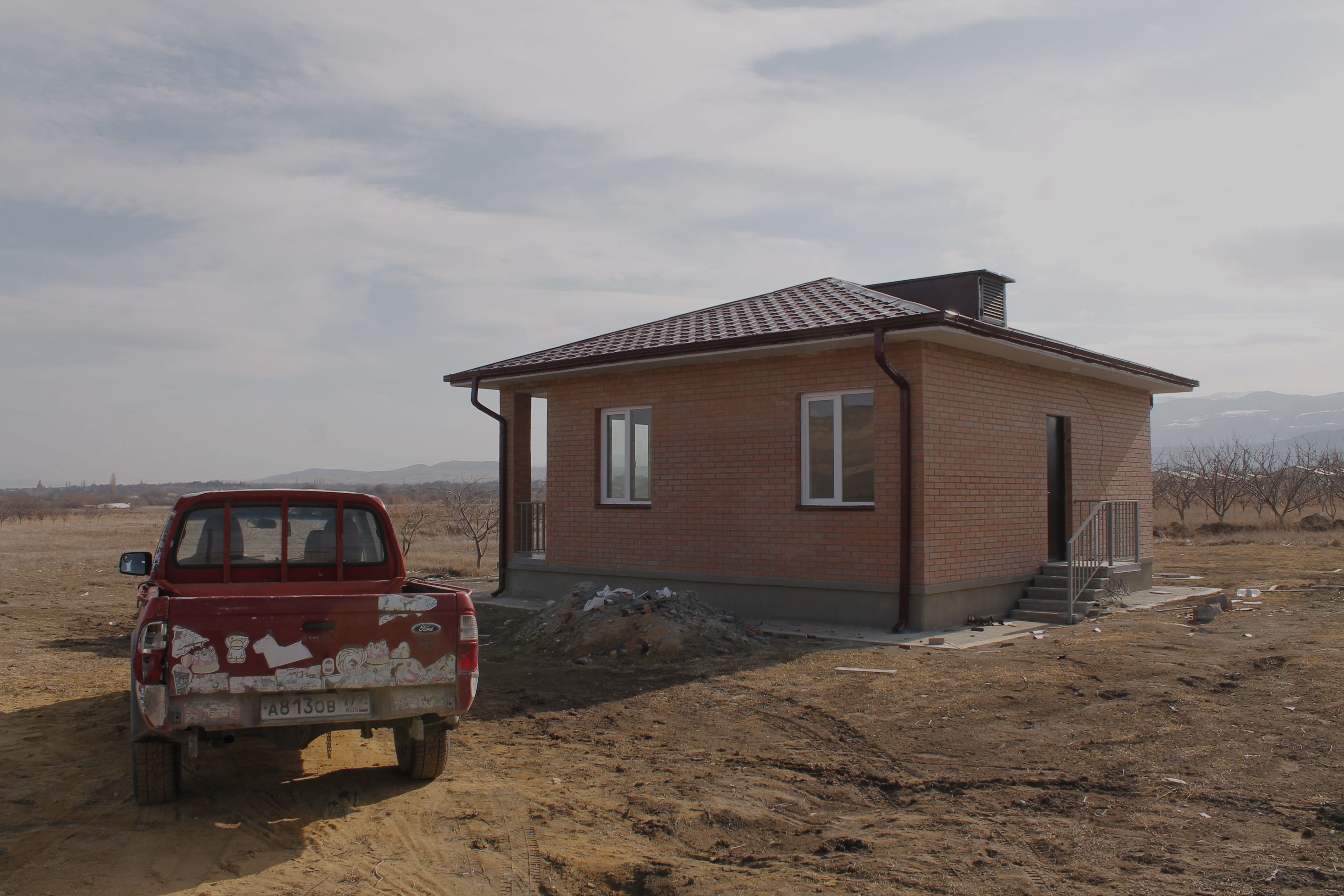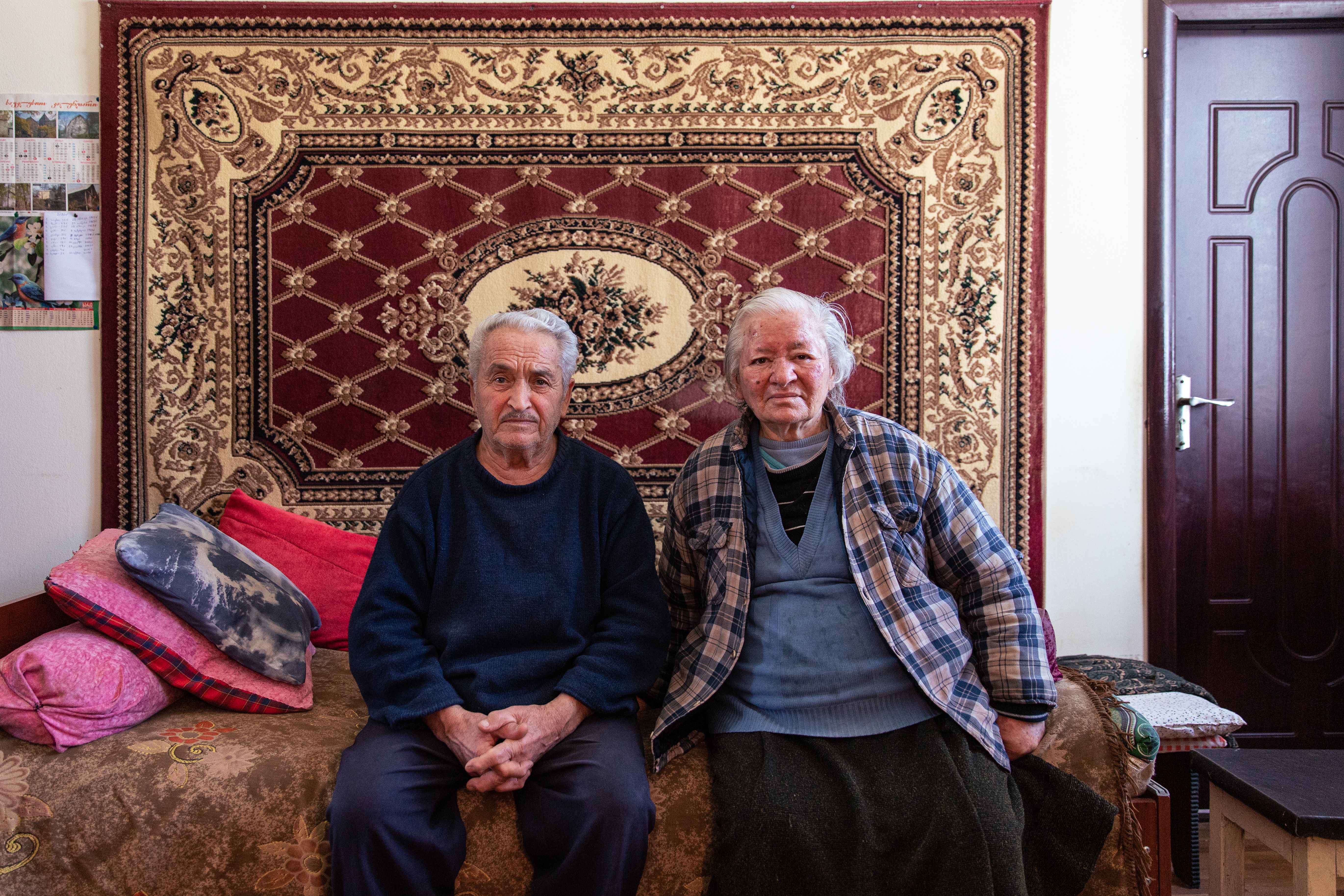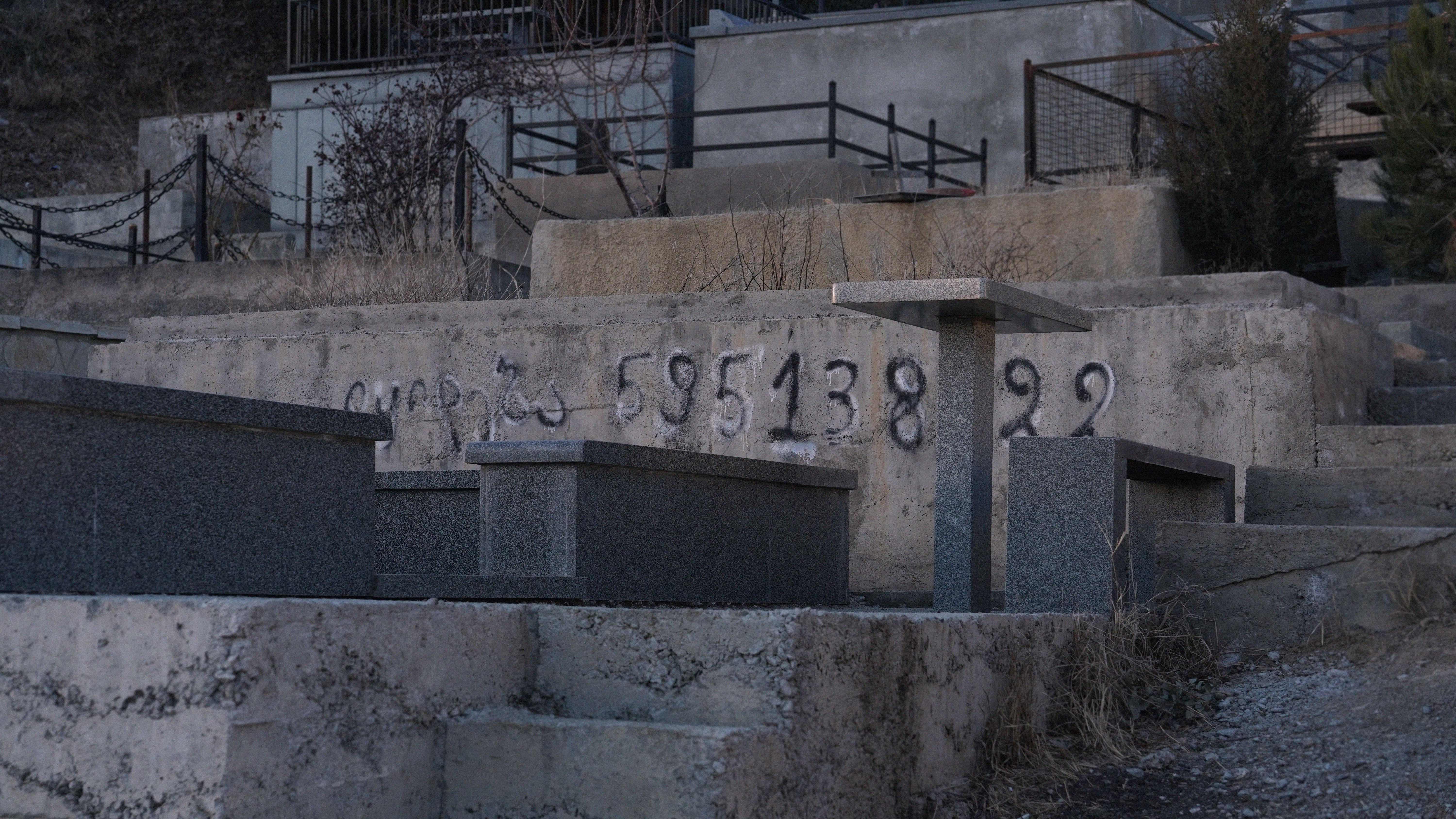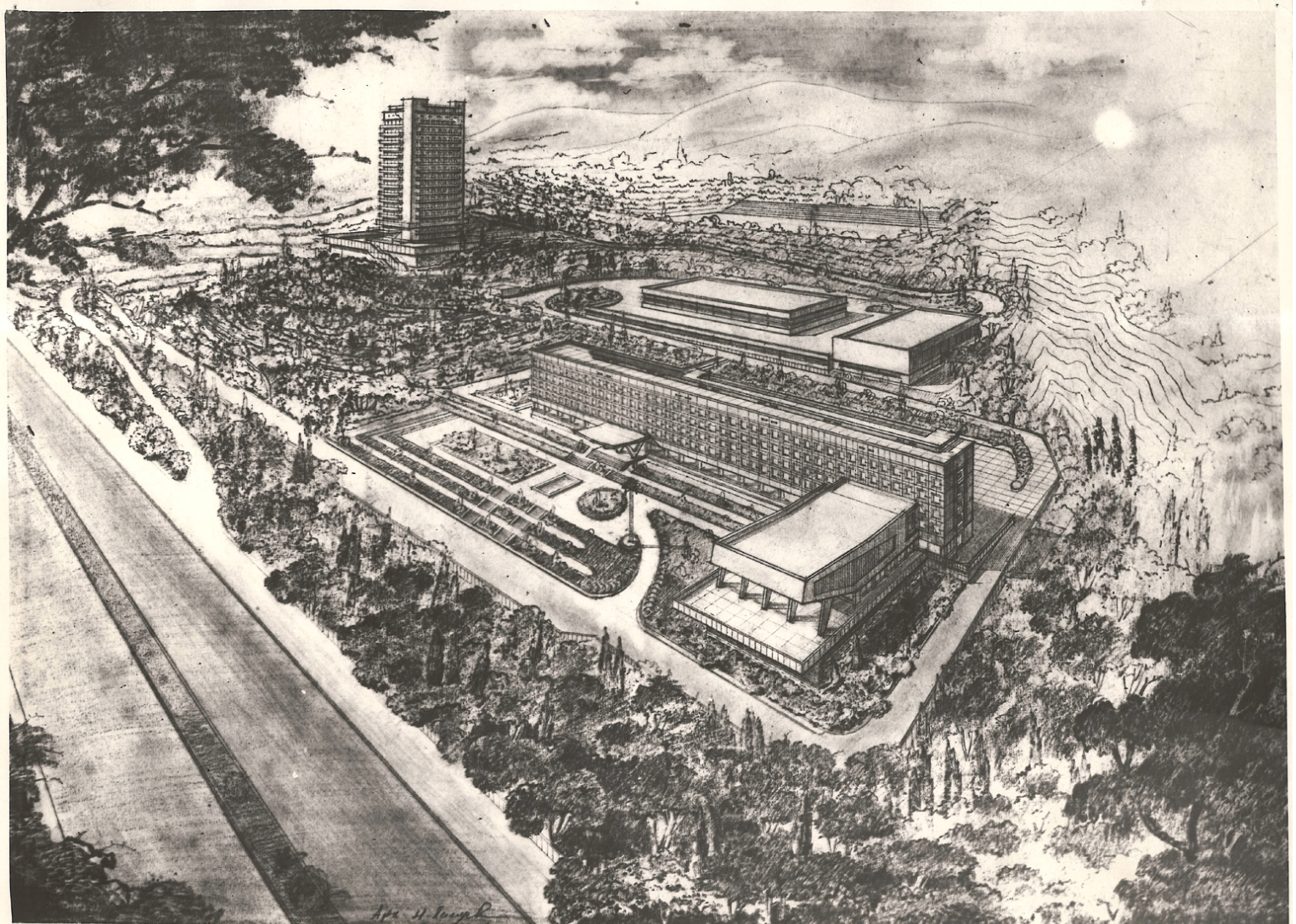Maia Zubashvili, 57, has not felt at home since she was forced to
flee her village in South Ossetia during the 2008 war. Today she and
her son Soso Zubashvili, 33, live in a 27 square meter room in a
renovated former music school in Gori, a mid-sized city in central
Georgia.
“You come to hate
entering the building. When you look at it, it looks exactly like
the home of displaced people, it’s in terrible condition,” Maia told
Chai Khana.
Maia was displaced
during the 2008 war when her village, Kheiti, which is located north
of Tskhinvali, was occupied. She and her son were initially moved to
the capital, Tbilisi, and settled in a kindergarten in the Gldani
district which had been repurposed to house internally displaced
persons (IDP).
One day in early 2009, she received an unexpected call from an
unknown government employee who gave her the option to go live in
one of two villages—Shavshvebi or Berbuki—or near a factory in Gori.
Knowing that the two villages were far from any cities but unaware
of the conditions that awaited her in Gori, Maia chose to live in
Gori to be closer to jobs.
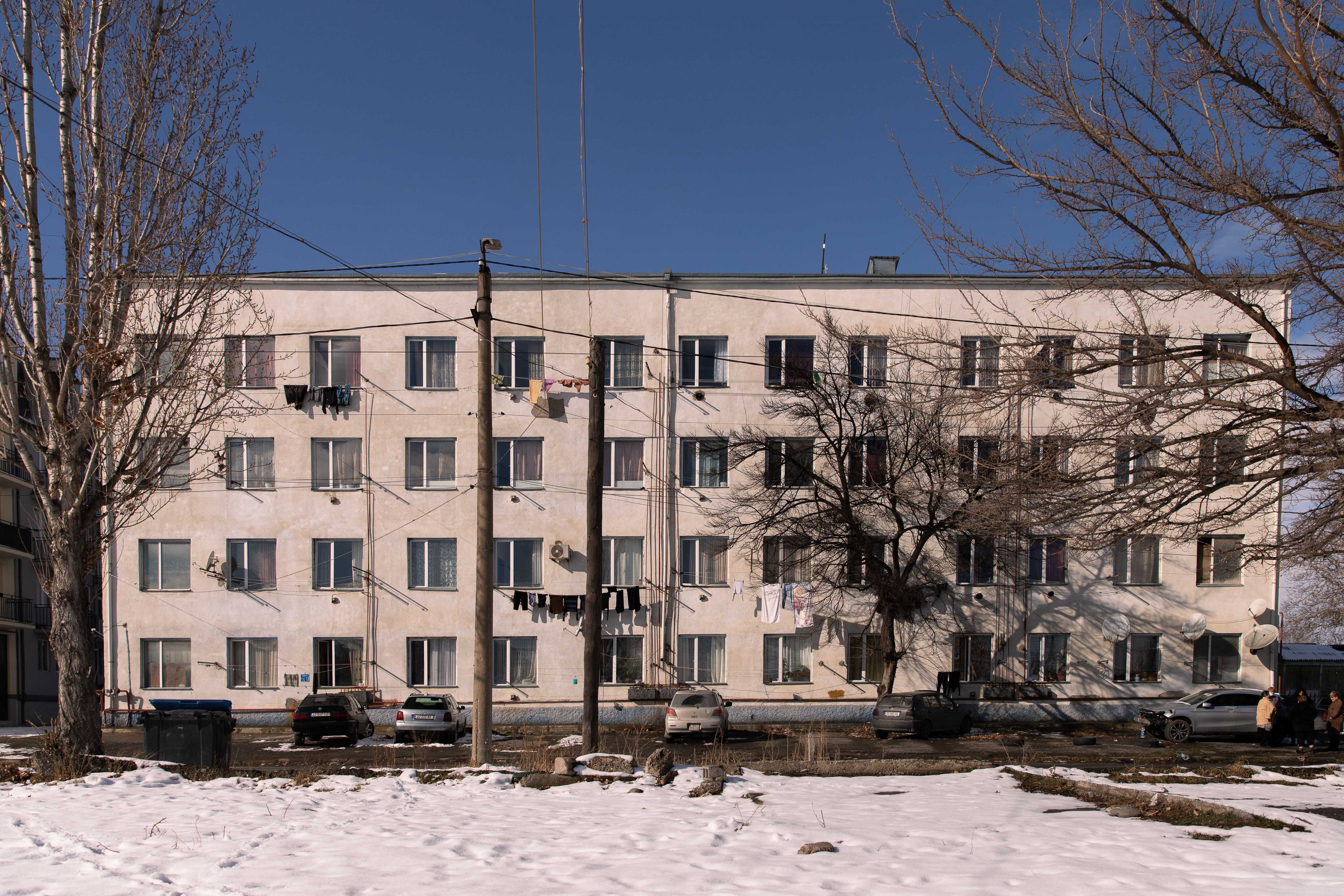
40 families have lived in the former music school for the last 14 years with little hope of change for better living conditions. They told Chai Khana that the only time hope makes an appearance is during election season, when officials are eager to make an impression to garner votes. As soon as polling stations close however, they seem to be just another problem for someone else to solve. (Credit: Maryam Mumladze)
While thousands of families received newly built cottages in the
villages of Shavshvebi and Berbuki, among other nearby settlements,
Maia and her son were each given 27 square meters, partitioned by
plasterboard walls, to live in. Having rented out one of the rooms
to add to their income, Maia now shares the space she was given with
her son, daughter-in-law, and four grandchildren.
“Forty families live in a renovated, former music school that was
meant to house 20 families. There aren’t even basic conditions here,
we have mold everywhere, access to water is limited and leaks are
frequent causing constant fights between neighbors,” she added, “We
don’t have any hope that anyone will give us a new home.”

Maia’s grandchildren play games in the family's bedroom as their mother watches on. (Credit: Maryam Mumladze)
By 2020 the Georgian government—through budgetary funds and donor
programs—had resettled 42,000 families, with another 40,000
continuing to await housing. Many, like Maia, have found, however,
that what the government calls a “durable housing solution” is
unsustainable.
Their
circumstances in part are a reflection of the Georgian government’s
failure to put together a comprehensive plan to solve the housing
crisis facing its citizens. The initial Law on IDPs was adopted in
1996, three years after the end of the Abkhazian war, which
displaced nearly 250,000 Georgians. It only provided initial
recognition of their status and temporary solutions such as covering
the costs of transportation to where they would be housed,
however.
In the absence of any
government solutions, many sought shelter with family members,
friends, or in repurposed and dilapidated buildings like factories,
hotels, clinics, government buildings, and former student housing.
While Georgia did put together
a state strategy in 2007 that was meant to address all the aspects
of displacement from housing to healthcare, employment, education
and legal status, the implementation of specific projects has proven
to be more complicated. Indeed a few of the residents at the former
music school in Gori express a sense of injustice and frustration at
the seemingly haphazard selection process through which some end up
being luckier than others.
“A
major challenge in the field of IDPs are the more than 300 old
collective settlements that are in ruins, depreciated and
life-threatening. 20,000 people live in such conditions. They need
urgent accommodation. There is poverty in these settlements,” Meri
Bitsadze, the Communications Coordinator at the Charity Humanitarian
Center “Abkhazeti” (CHCA), told Chai Khana.
The government did introduce a point system in 2013 to try to
streamline the process and prioritize which families received
housing over others. To assign points, the Ministry looks at factors
such as a family's income as well as if family members fit any
special categories for pensioners, veterans, handicapped family
members, or family members who passed away during the two conflicts.
The Ministry also takes into account the living conditions in their
current residence. After initial scoring is conducted, families have
to go through site visits and interviews before a final decision is
made.
Assigning points however,
has proved to be a faulty system, according to IDPs.
Monika Dgebuadze, 30, an IDP from Abkhazia who lives in a newly
built apartment building with her husband and children in Zugdidi,
explains that there have been families who did not receive housing
for simple errors that could have been easily remedied while others
have chosen to rent or sell their homes for various reasons.
“There are many who don’t want the apartments but also those who are
seriously in need but did not receive any housing because of simple
mistakes,” she says. “Even for reasons like not being at home for a
site visit even though they weren’t warned beforehand of the visit
and so they didn’t receive an apartment. At the same time there are
those who don’t even live in Georgia and don’t plan to.”
This disconnect between displaced communities and the government is
common. When Maia asked if she could receive additional room in
consideration of her grandchildren, she says the response was
dismissive, “This is the space you and your son were given, so live
in it.”
Chai Khana contacted the Ministry of Internally Displaced
Persons from the Occupied Territories, Labor, Health and Social
Affairs for comment but did not receive a response by the publishing
date.
To navigate the system,
IDPs have come to rely on NGOs, like the Georgian Young Lawyers
Association (GYLA), which fill the gap left by the government and
provide IDPs with legal assistance. The assistance provided by such
organizations can prove crucial in deciding whether IDPs receive a
house or not and what conditions will await them there.
“We are currently conducting four cases related to the right to
housing. Last year GYLA successfully finished two cases regarding
this issue. However, we are providing free consultation. For
example, last year 141 IDP received legal consultations,” Nona
Kurdovanidze, GYLA’s Legal Aid Program Director, told Chai Khana.
A report authored by GYLA alongside other NGOs working on the issue
in 2019 found that 74 percent of IDPs named living conditions as the
major problem they faced, with many also citing inaccessibility to
essential services such as medical facilities and transportation as
a serious issue.
Overall, IDP
families continue to lag behind in access to opportunity. Many
families cited concerns over their inability to prepare their
children for higher education exams and cover the costs even if
their child is accepted to a university.
Of the IDPs interviewed in the report, all of whom lived in
government assigned or built communities, 70 percent relied on state
allowances and pensions as their main source of income with only 23
percent depended on their salary. These statistics provide a grim
picture of the reality facing many displaced families in Georgia.
As Maia Bitsadze explains there are down sides faced even by the
“lucky ones” who are given homes in government built communities.
“The disadvantage of this program is that several apartment
buildings are built in one area and handed over to the most needy
IDP families, creating concentrated poverty,” Bitsadze says.

Maia’s daughter-in-law, Marina Zubashvili, 32, gets her child ready for school in the family’s living room. (Credit: Maryam Mumladze)
A lack of IDP participation in the processes that decide their
futures is a significant part of the issue. A 2020 Internal
Displacement Monitoring Center report found that while strategies
have been well-intentioned, their implementation has at times proven
to be ineffective with IDPs left in the dark about how decisions are
made at the top.
“In just two
months, they selected the territories, drew up the plans in one
week, and built the homes, which is very quick,” Nano Zazanashvili,
an architect and the main researcher in a 2011 study on government
built IDP communities near Gori, told Chai Khana.
“The entire process was informal. Some respondents told me that
everything happened on a one phone call basis: meaning that they
would call someone, demand that the project plans be drawn up
quickly, and all decisions were made in this manner.”
Shortcomings included settlements that lacked schools or other basic
infrastructure.
Nugzar
Tinikashvili, Mayor (Gamgebeli) of Akhalgori Municipality and an IDP
since 2008, agrees there were significant problems with how the
settlements were built. Nugzar and his family received a
government-built house in the Tserovani settlement, an expansive
community that stretches across the plains that separate de-facto
South Ossetia from the rest of Georgia.
“There were serious problems facing the settlement. Everything had
been done in a rushed manner and so there were a lot of issues in
relation to the speed of construction,” he told Chai Khana.
For instance, until 2014, when
Nugzar was elected, there was no hot water or indoor bathrooms.
Families had to use wooden outhouses located 20 meters from their
houses. Since Nugzar was elected to oversee the 2,700 families
living in Tserovani and nearby settlements, they have built
bathrooms for all the houses and running hot water.
While the situation has improved today, he noted, the community
still faces major challenges.
“The problems we face are similar to those facing the entire
country, the only difference is that we are also displaced persons.
Employment is the biggest issue we face but within Tserovani itself
we have a very good employment rate, with 1,500 people working and
another 300 people employed in local places,” Nugzar said.
“It is up to us to share our needs with the government…We select
projects according to the needs of the population, since I myself am
an IDP and live here, I see what our needs are.”
A 2019 World Bank Report shows that 14.5 percent of IDPs are
unemployed, although in rural areas the figure was estimated to be
closer to 40 percent. Seventy percent of displaced persons surveyed
in the report described themselves as underemployed.
So-called “old IDPs,” including those that came from Abkhazia in the
1990s, have been shown to have at least 10 percent lower monthly
wages than their local counterparts according to the Institute of
Labor Economics. A 2009 UNHCR report also shows that IDP children
are more vulnerable than their local counterparts and at times have
to leave school earlier to support the family.
The picture is not uniformly dark for all IDPs, however. Due to the
variety of donors financing IDP housing, some families end up living
in substantially better housing than others.
The Danish Refugee Council has been implementing housing projects
for IDPs in Georgia for decades. However, IDPs that qualify for
housing provided by the Danish Refugee Council receive homes that
meet international norms and standards.
The DRC has a rigorous selection process to evaluate IDP families
for housing. One of the criteria that sets DRC apart from the
government is that they require families to actually own the plots
of land upon which their future homes will be built.
Unlike with government housing, IDP families have more of a say when
working with the DRC.
After
projects start, the DRC has a monitoring team of its own engineers
who are actively involved in the oversight of construction. Families
themselves are also involved in this process, noted Nino Khokhobaia,
the Head of Programmes for the DRC.
“The beneficiaries themselves are often the best monitoring
mechanism, since it is their home that is being built. Anytime there
is even the smallest delay, they always call us to notify us,” she
said.
Khvicha Barbakadze and
his wife Tamar Kiknadze, who have a young child, are IDPs who are
currently waiting to receive a home from the DRC. They currently
live in Tbilisi but their home is being built near the city of
Khashuri.
